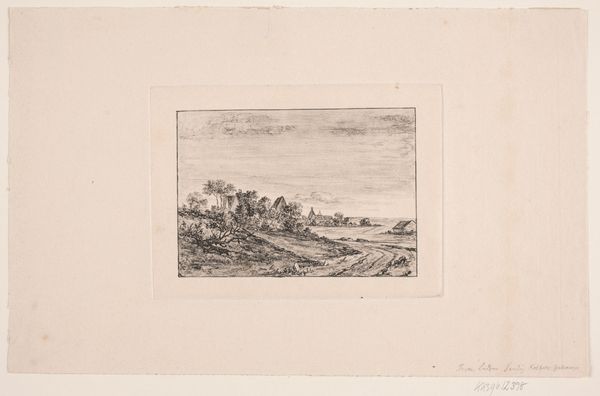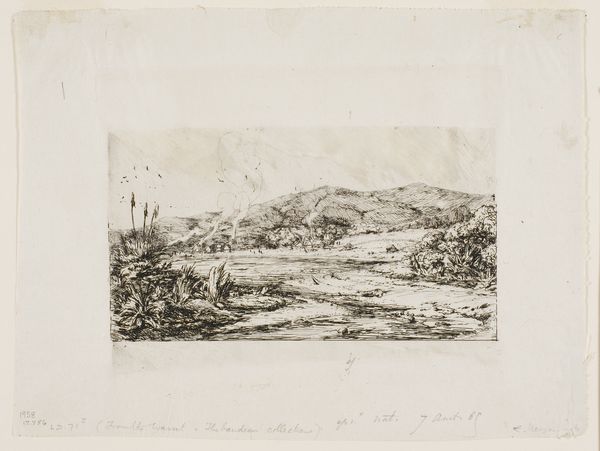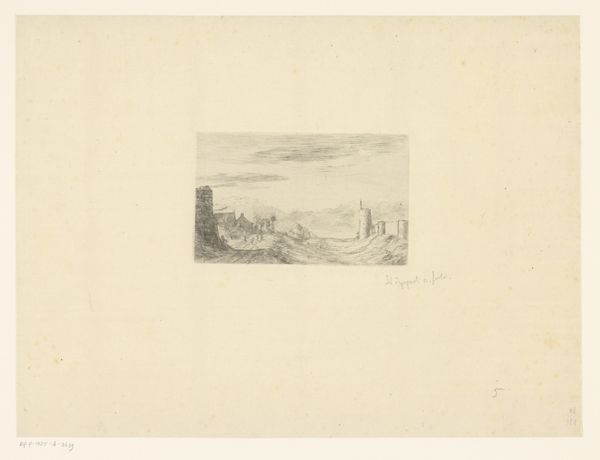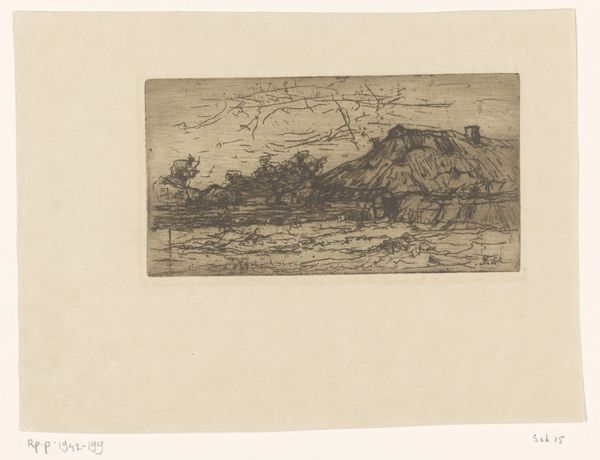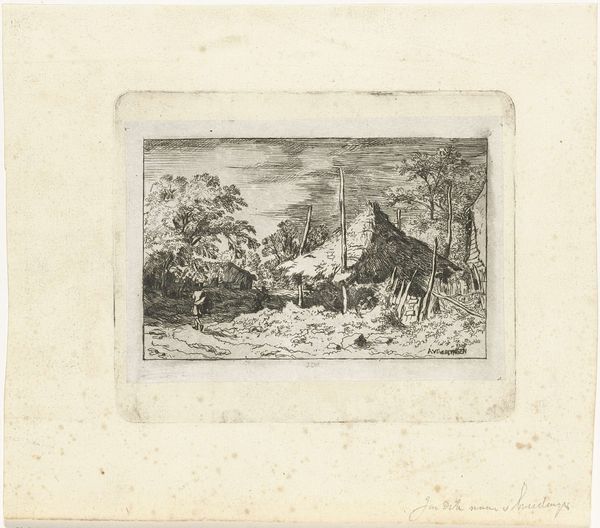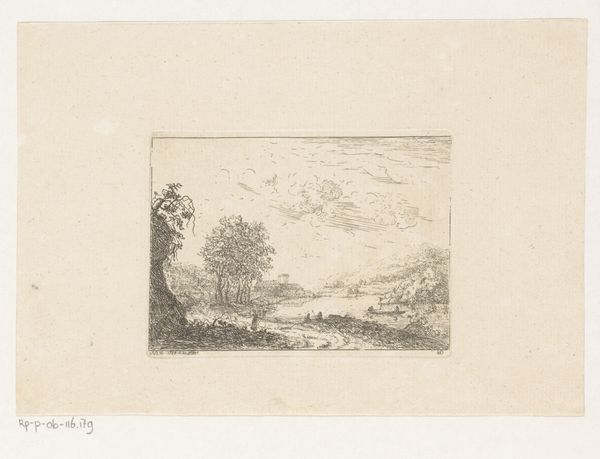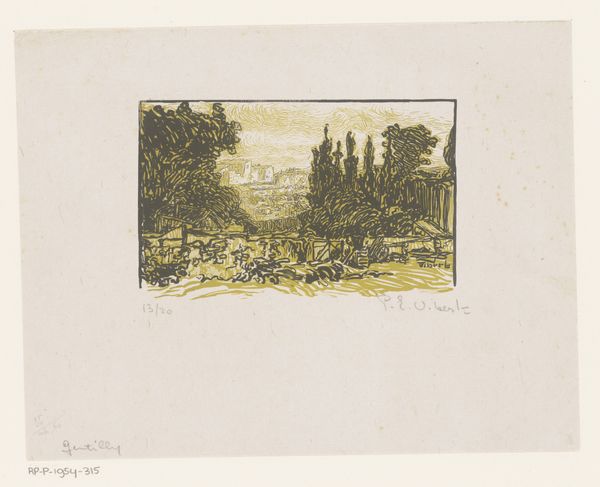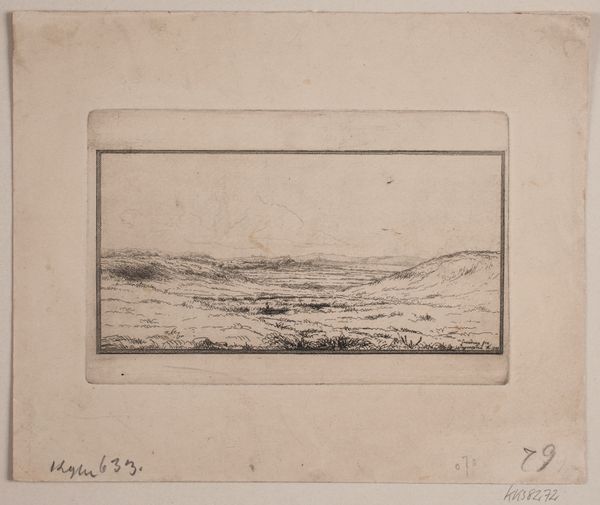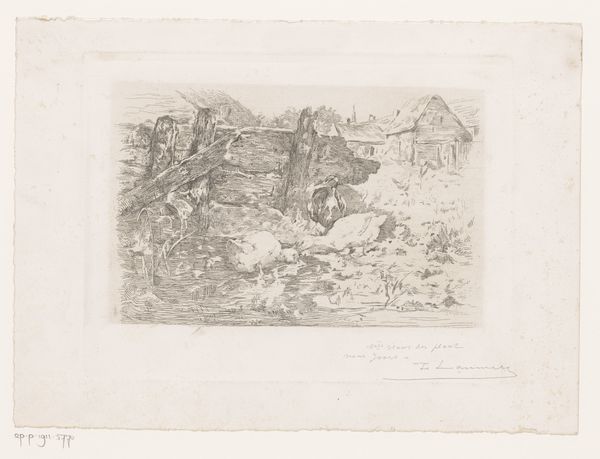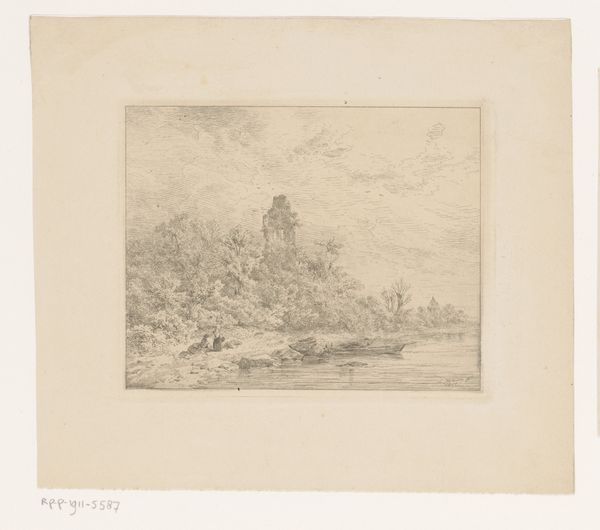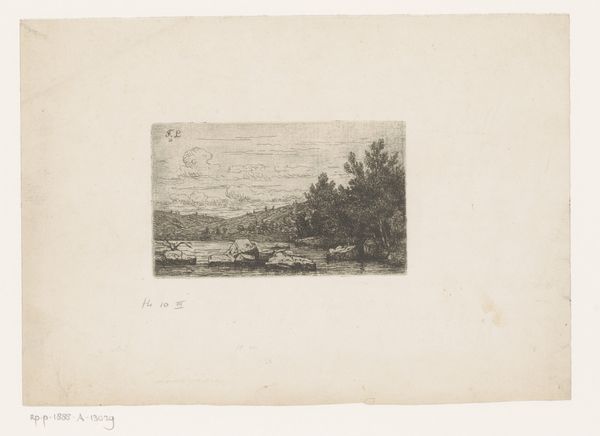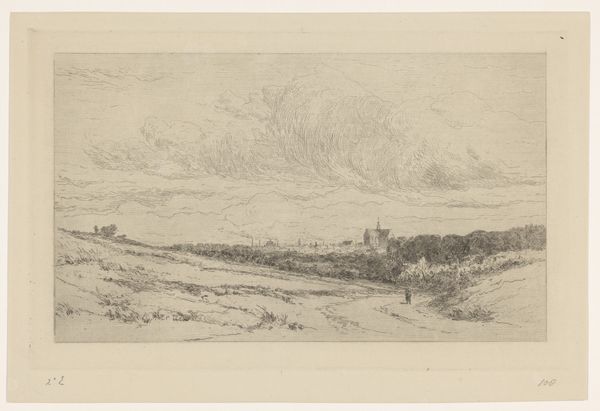
print, etching
# print
#
etching
#
landscape
Dimensions: height 80 mm, width 108 mm
Copyright: Rijks Museum: Open Domain
Editor: This is Piet Verhaert's "Heuvellandschap met molen" from 1878, created using etching. It's quite small, and the detail achieved with just lines is striking. How would you interpret this work? Curator: Focusing on the materials, the choice of etching—a process reliant on acid, metal, and intense labor—immediately directs us to consider the industrial and chemical processes intertwined with art production during this period. Think about how this accessibility of printmaking democratized art, but simultaneously commodified the image. Editor: So the etching process itself is crucial to understanding the work's context? Curator: Exactly. This print is not just a pretty picture of a landscape. The very act of etching, a process of repeated labor using industrial materials, speaks to the changing relationship between art, labor, and the emerging industrial world. How does the landscape itself contribute to this? Editor: It's a rural scene with a windmill. Curator: And windmills powered by natural sources. Reflect on their crucial role in pre-industrial economies. Verhaert isn't just depicting a landscape; he's showing a scene interwoven with economic infrastructure, using techniques influenced by burgeoning industrial processes. What does that say about how we define 'art' and 'craft'? Editor: It really makes you think about the labor that went into producing the image and the scene depicted. Curator: Precisely! By emphasizing the process and materiality, we gain a richer understanding of the societal forces that shaped Verhaert’s artistic choices and the cultural value we assign to them. Editor: This changes everything for me! I'll never look at an etching the same way.
Comments
No comments
Be the first to comment and join the conversation on the ultimate creative platform.
